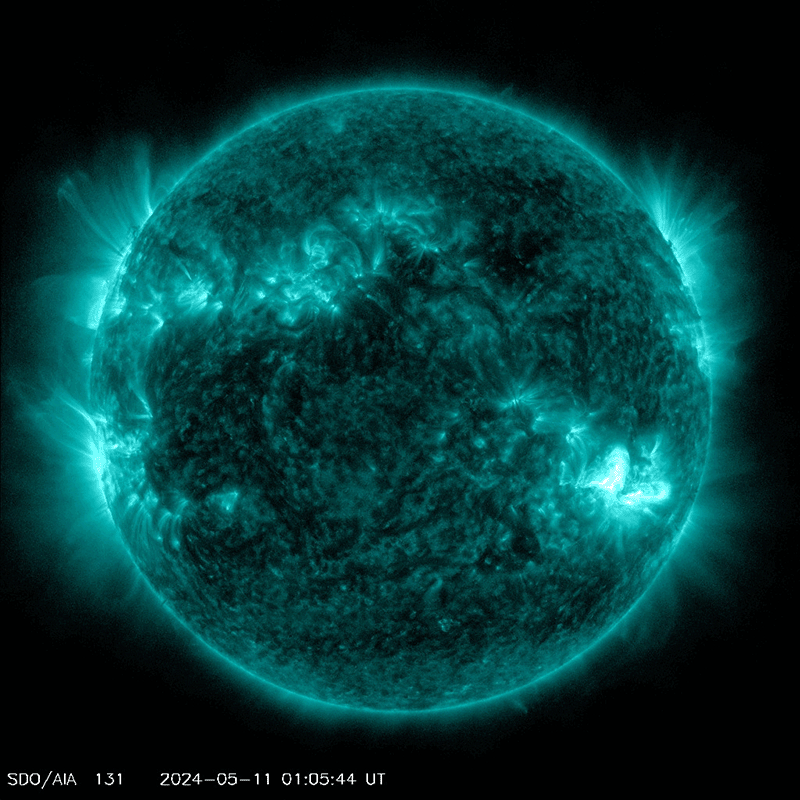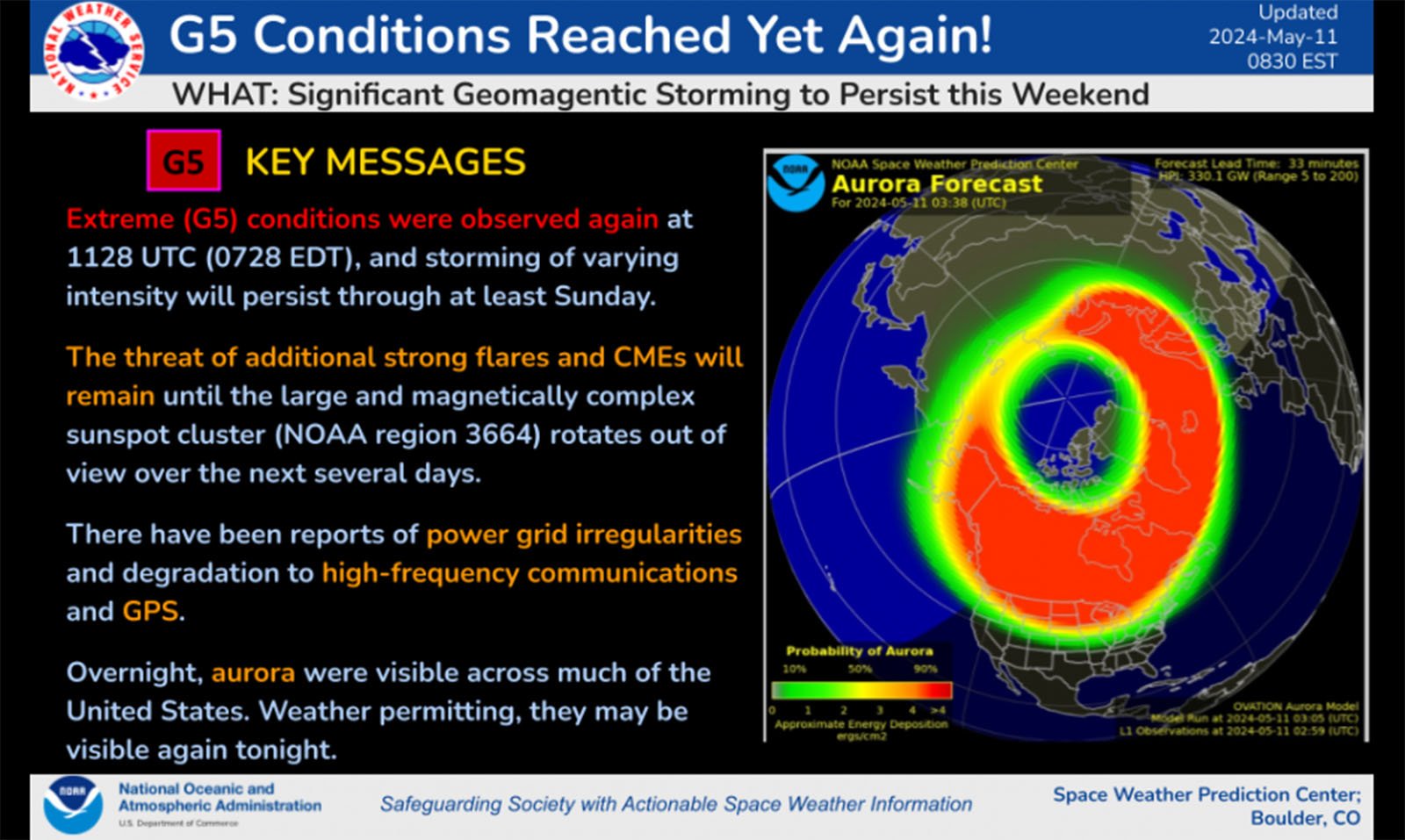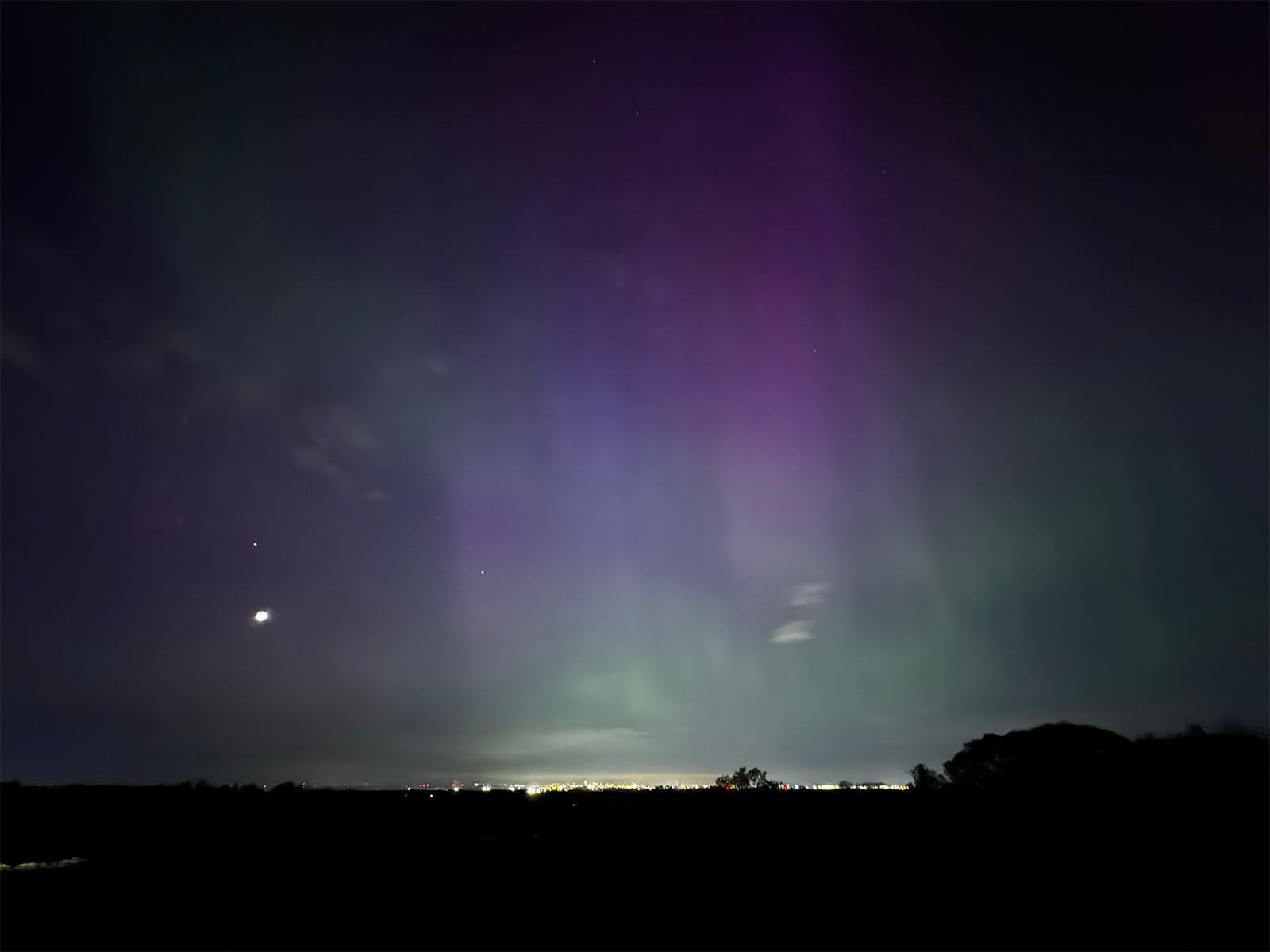Missed the Historic Auroras? You Have a Second Chance Tonight
![]()
Thanks to a historic geomagnetic storm last night, May 10th, people as far south as Florida had the chance to see auroras. For those who missed the dazzling light show for one reason or another, there is a second chance tonight, May 11th.
Currently, the geomagnetic storm is still generating a Kp 9 rating, which is as high as the scale. While this may drop slightly, the National Oceanic and Atmospheric Administration’s Space Weather Prediction Center (NOAA SWPC) expects a G4-class storm to persist until tomorrow before dropping to G3 on Monday. A G4 storm is “severe,” and G3 is “strong,” so there are plenty more opportunities to see the northern lights in the coming days, especially for those at mid-high and high latitudes.
![]()
![]()
NOAA says that “storming of varying intensity will persist through at least Sunday,” and notes that Sunspot region 3664 remains active. It is still producing X-class flares as of late Saturday morning, meaning the storm may continue for a while.

This is brilliant news for photographers and night sky enthusiasts, although it is not great news for the power grid and high-frequency communications infrastructures.

Given that many people, especially in the southern portions of the U.S., are likely seeing the northern lights for the first time, the spectacle can seem different from expectations. While many have seen the brilliant greens, pinks, and purples in photos, to the naked eye, auroras usually look more like moving ribbons of pale white. In the case of a G4 or G5 storm, it is possible to see colors with the naked eye, especially pink and green, but that is somewhat unusual.

As many found out last night, a clever and simple way to see some of the colors of the auroral display is to whip out your smartphone, open the camera app, and point it toward the sky. Thanks in part to all the fancy processing in modern smartphones, including low-light modes, the camera’s sensitivity is high enough to see some of the northern lights in real time.
![]()
![]()
![]()
To get the best shots, photographers should use a proper camera system, ideally with a large sensor and fast lens. For all the tips you’ll need, check out PetaPixel‘s “How to Find and Photograph the Northern Lights” guide. Of course, given the incredible and once-in-a-generation solar storm thrashing Earth, finding the northern lights is nearly as easy as finding a clear, dark night sky.
Image credits: Photos by Jeremy Gray